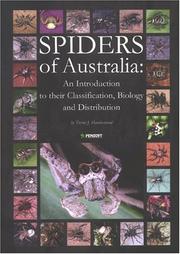| Listing 1 - 10 of 73 | << page >> |
Sort by
|

ISBN: 1281431389 9786611431389 9546423424 1435629795 9781435629790 9781281431387 9546421898 9789546421890 9546421928 9789546421920 6611431381 9789546423429 Year: 2003 Publisher: Sofia Pensoft
Abstract | Keywords | Export | Availability | Bookmark
 Loading...
Loading...Choose an application
- Reference Manager
- EndNote
- RefWorks (Direct export to RefWorks)
Book
ISBN: 0674074319 Year: 1982 Publisher: Cambridge (Mass.) : Harvard university press,
Abstract | Keywords | Export | Availability | Bookmark
 Loading...
Loading...Choose an application
- Reference Manager
- EndNote
- RefWorks (Direct export to RefWorks)
Book
Year: 1986 Publisher: London : Ray society,
Abstract | Keywords | Export | Availability | Bookmark
 Loading...
Loading...Choose an application
- Reference Manager
- EndNote
- RefWorks (Direct export to RefWorks)
Article
Year: 1946 Publisher: Kobenhavn : C. A. Reitzel,
Abstract | Keywords | Export | Availability | Bookmark
 Loading...
Loading...Choose an application
- Reference Manager
- EndNote
- RefWorks (Direct export to RefWorks)
Book
Year: 1910 Publisher: Washington : Govt. print. off.,
Abstract | Keywords | Export | Availability | Bookmark
 Loading...
Loading...Choose an application
- Reference Manager
- EndNote
- RefWorks (Direct export to RefWorks)
Book
Year: 1975 Publisher: London Ray Society in association with British Museum (Natural History)
Abstract | Keywords | Export | Availability | Bookmark
 Loading...
Loading...Choose an application
- Reference Manager
- EndNote
- RefWorks (Direct export to RefWorks)
Book
Year: 2007 Publisher: Newtown Square, PA : U. S. Dept. of Agriculture, Forest Service, Northern Research Station,
Abstract | Keywords | Export | Availability | Bookmark
 Loading...
Loading...Choose an application
- Reference Manager
- EndNote
- RefWorks (Direct export to RefWorks)
Adult spiders (N = 6,979) of 19 families, 145 genera, and 302 species (including 4 unknown) were collected from diverse inland, coastal, and offshore habitats of Milbridge, a 6,290-ha minor civil division of the East Coastal BioPhysical Region. Spider species richness per family ranged from 1 (Titanoecidae and Pisauridae) to 89 (Linyphiidae); species richness per genus ranged from 1 to 13, with 88 genera represented by a single species. As expected, the collected taxa were distributed unequally between two basic foraging strategies: 10 families, 98 genera, and 179 species of web spinners; 9 families, 47 genera, and 123 species of hunters. Spider abundances varied widely among taxa; individuals per family ranged from 1 (Titanoecidae and Pisauridae) to 1,691(Lycosidae); individuals per species ranged from 1 (86 species) to 470. Pardosa moesta was the most frequently collected spider. Although total species composition favored web spinners over hunters, more hunters were collected than web spinners, and more female spiders were collected than male spiders, a pattern evident for both web spinners and hunters. Spider sex ratios varied widely among the collected species and were influenced by sampling method, habitat, and season. Pitfall traps yielded more species and more individuals than any other sampling method. Fully 47.0 percent of the inventoried fauna were method-unique species; most were taken by pitfall traps, searches, and sweep nets. Species-faunal compositions among habitats were generally distinct among habitats (QS [less than or equal to] 50.0), and included habitat-unique species.
Book
Year: 1971 Publisher: Washington, [D.C.] : Smithsonian Institution Press,
Abstract | Keywords | Export | Availability | Bookmark
 Loading...
Loading...Choose an application
- Reference Manager
- EndNote
- RefWorks (Direct export to RefWorks)
Book
Year: 1994 Publisher: Tervuren Musée royal de l'Afrique Centrale
Abstract | Keywords | Export | Availability | Bookmark
 Loading...
Loading...Choose an application
- Reference Manager
- EndNote
- RefWorks (Direct export to RefWorks)
Book
ISBN: 0621079405 9780621079401 Year: 1983 Publisher: Pretoria Department of Agriculture, Division of Agricultural Information
Abstract | Keywords | Export | Availability | Bookmark
 Loading...
Loading...Choose an application
- Reference Manager
- EndNote
- RefWorks (Direct export to RefWorks)
| Listing 1 - 10 of 73 | << page >> |
Sort by
|

 Search
Search Feedback
Feedback About UniCat
About UniCat  Help
Help News
News